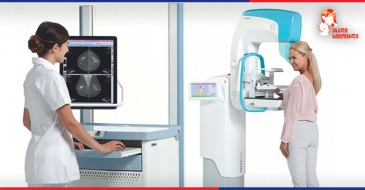Total pelvic-femoral endoprosthesis using dual mobility endoprosthesis and its advantages over standard prosthesis
Endoprosthesis is a high-tech method of treatment, which involves replacing the damaged joint with modern material (implant), during which the joint yoga apparatus is maintained and therefore it functions perfectly.
Mikheil Periashvili, a New Life traumatologist, talks about the dual mobility of endoprosthetics.
- What is endoprosthesis and what do modern approaches mean?
- In orthopedics, it is the replacement of any diseased human joint with an artificial joint, and its modern approach involves to restore the patient's ability to function as quickly as possible, at the expense of reducing surgical risks and further complications.
- In what case is endoprosthesis necessary?
- Treatment with this kind of method is necessary when the function of the lower limb is impaired, which is accompanied by severe pain and restriction of joint movement, while conservative treatment is ineffective. The above condition is caused by both traumatic injury and chronic progressive diseases, such as arthrosis of the joint and osteoporosis.
- What can you tell us about the types and components of endoprosthesis?
- Different types of prostheses can be used depending on the location of the pathology and its type. For example, standard or dual mobility endoprostheses made from chemically and biologically inert metal alloys such as titanium and stainless steel are used to treat pelvic-osteoarthritis (coxarthrosis). Also, some components of the prosthesis are made of ceramic and high molecular polyethylene, which reduces their wear and increases the so-called prosthesis: service term.
- Which clinical stuidies are performed for diagnosis?
- Radiological studies are used to detect pathologies of the skeletal system, such as:
- Radiography;
- Computed tomography;
- Densitometry.
In addition, there may be aseptic necrosis of the bone (at this time the dead bone area is slowly absorbed and is replaced by scar tissue, resulting in the development of aseptic necrosis of the femoral head. Such changes are particularly common - after Pertussis disease in adulthood, also (post-traumatic stress disorder), magnetic resonance imaging should be performed to detect it.
- In what case is it necessary to replace it with an artificial joint?
- Replacement of any joint with endoprosthesis is necessary in case, when the patient's ability to work is reduced, which significantly affects the socialization process. One of the main goals of these operations is to restore the musculoskeletal function of the limb, as well as re-socialization. The patient after the surgery has the opportunity to return to work, to do its daily activities, without pain and restrictions.
Dual mobility implant
The dual mobility implant is a modern model of pelvic-femoral joint prosthesis. Compared to a standard mobility prosthesis, it allows for a wider amplitude of lower limb movement and the chance of its falling is minimized. Unlike the normal prosthesis, a dual mobility endoprosthesis allows the range of motion of the joint to be increased to 187 degrees when a conventional prosthesis is restricted to a 90-degree angle. With this comfort, patients are no longer prohibited from refraining from movements such as:
- Sitting on a low chair;
- Climbing or descending from stairs;
- Prolonged walking and exercise;
- Engaging in sports;
- Rotation.
- Does the patient need preoperative training for endoprosthesis?
- Standard preoperative preparation is required for surgery: All laboratory and radiological examinations required to assess the general condition of the patient are performed:
- General blood test;
- General analysis of urine;
- Determination of glucose;
- Infections (hepatitis research in general, HIV infection);
- Electrocardiogram.
Also, patients should not take food after 20:00 hours before surgery, fluids after 24:00 hours, and alcohol after 72 hours before surgery;
Antithrombotic prophylactic therapy is performed before the operation. For cardiac patients who need endoprosthesis, we are guided by the recommendations of a cardiologist in the preoperative period, for patients with neurological problems - with the involvement of a neurologist.
- How long will the patient stay in the clinic and what time does the rehabilitation period include?
- The standard postoperative period after pelvic-thigh and knee endoprosthesis requires the patient to be hospitalized for 5 days, on the third day after surgery, the patient begins to activate and move independently within the ward, while further rehabilitation continues on an outpatient basis, under the supervision of a physician.
- What is the average lifespan of a dual mobility implant?
- The average lifespan of a dual mobility implant is 20-25 years, in addition, it is important to know how much the patient will obey to the doctor, in the early postoperative period and even after surgery! For this, the patient is given the necessary recommendations to be considered after pelvic-femoral endoprosthesis.
Wish you health!
Give us a call









